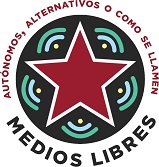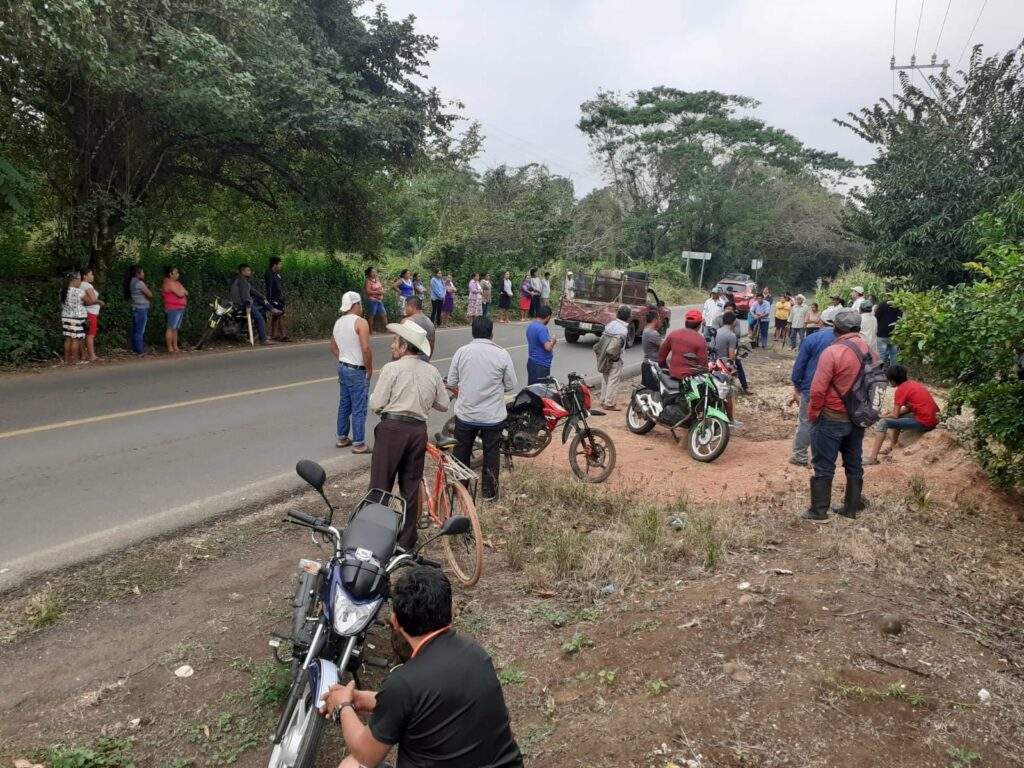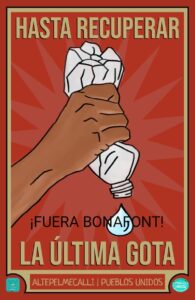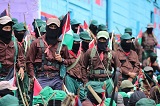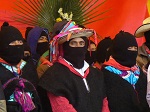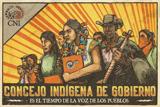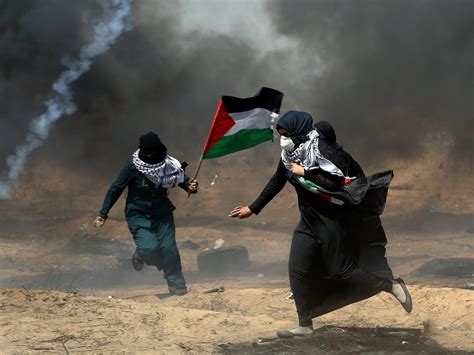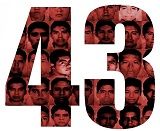Sorry, this entry is only available in Español. For the sake of viewer convenience, the content is shown below in the alternative language. You may click the link to switch the active language.
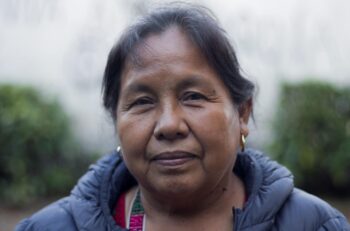
Por Sara Guerrero Alfaro
Las defensoras de derechos humanos María de Jesús Patricio y Nisaguie Abril Flores participan en la Gira de la Vida, orquestada por el Ejército Zapatista de Liberación Nacional.
María de Jesús Patricio, mejor conocida como Marichuy, es una médica tradicional de origen nahua y defensora de los derechos humanos. En 2017 fue elegida como vocera representante del CNI y precandidata en las elecciones presidenciales de 2018. Nisaguie Abril Flores es integrante de la Asamblea de los Pueblos Indígenas del Itsmo en Defensa de la Tierra y el Territorio y recientemente colaboró con la producción del documental Gente de mar y viento.
Pudimos hablar con estos dos defensores de derechos humanos durante su breve visita a Galicia. Los encuentro una tarde soleada de fin de año en el Centro Social de Bouzas. En los días previos, ambas mujeres participaron en varios encuentros celebrados tanto en Santiago de Compostela como en Vigo por parte de universitarios y diversos colectivos. Llevan más de un mes de viaje, su final no está cerca y esa misma tarde su agenda apunta a un viaje a Barcelona.
A lo largo de la entrevista, la voz de Marichuy se quebró un par de veces por las varias semanas de trabajo continuo. A su lado, Nisaguie Abril Flores también se siente un poco cansada. Pero a pesar del largo turno de noche del día anterior y el viaje por delante, ambos me saludan con moderación. Su perspectiva de lucha, que se basa en la creación de alianzas entre diferentes grupos, establece pautas alternativas para la superación del realismo capitalista y los límites de las políticas identitarias.
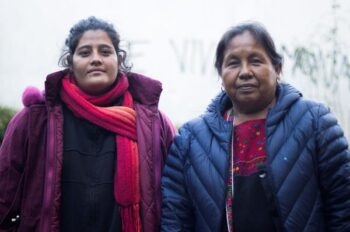
Marichuy e Nisaguie Flores estiveron en Galicia. Pablo Santiago
Un poco de memoria, luchas a escala global
El 1 de enero de 1994 fue un año histórico para la República Mexicana. El levantamiento del Ejército Zapatista de Liberación Nacional (EZLN) cambió la perspectiva mixta del país y visibilizó las sistemáticas violaciones a los derechos humanos de las comunidades indígenas. Dos años después se crea el Congreso Nacional Indígena (CNI), un espacio de organización propio de los pueblos originarios, con el objetivo de fortalecer sus luchas de resistencia y rebeldía, con formas propias de organización.
Ahora, a 27 años del primer levantamiento y a 25 años de la creación del CNI, los pueblos indígenas de México intentan nuevamente cambiar la perspectiva de las luchas sociales. Esta vez, a escala global. Coincidiendo también con el 500 aniversario de la conquista de Abya Yala, el pasado mes de abril el EZLN anunció la denominada Gira por la Vida, una jornada en la que más de un centenar de representantes del EZLN y del CNI recorrerían varias ciudades europeas para realizar visible los procesos de lucha de las comunidades indígenas y la creación de redes con movimientos de resistencia a la opresión neoliberal en toda Europa.
El 20 de junio, tras varias semanas navegando, llegaba al Puerto de Vigo el barco bautizado La Montaña con el Escuadrón 421 a bordo. Esta comisión estuvo integrada por siete miembros del EZLN, quienes recorrieron varias ciudades europeas durante varios meses. Fue el 14 de septiembre de este año cuando llegó al aeropuerto de Viena una comisión llamada La Extemporánea, integrada por 177 personas de varias comunidades indígenas de todo México. María de Jesús Patricio y Nisaguie Abril Flores forman parte de esta Unidad de Escucha y Palabra que continuará con el camino iniciado por el Escuadrón 421.
¿Cómo está constituido el CNI?, ¿cuál es su relación con el EZLN?
Maria De Jesús Patricio (MA): En 1995, durante los diálogos de San Andrés, nuestros hermanos zapatistas convocaron a un Foro Nacional Indígena (FNI) en Chiapas, con el objetivo de que todos los pueblos transmitieran su palabra. En ese momento, tanto los medios como el gobierno dijeron que la situación en Chiapas era excepcional, que el resto de los indígenas estaban bien, que no tenían problemas. El Foro fue una respuesta a esto. Fue un movimiento estratégico de nuestros hermanos zapatistas. Absolutamente todas las poblaciones originarias de México llegaron a la FNI. Desde el principio notamos nuestro parecido físico. Mientras nos reuníamos allí, comenzamos a hablar. Todos vestían su traje, hablaban su idioma, compartían las costumbres de sus comunidades. Hablamos de los problemas que tenían nuestros hermanos de Chiapas, que venían resistiendo desde hace mucho tiempo. Eran problemas de salud, conflictos territoriales, violaciones de derechos colectivos.
El gobierno utiliza herramientas “legales” para justificar aún más el desalojo de comunidades
Fue ese encuentro el que nos hizo pensar en tener nuestro propio espacio. No una organización, sino algo que era un lugar donde se llevaba a cabo una gran asamblea y se sentía como el hogar de todos y cada uno. Luego se formó el Congreso Nacional Indígena. Esto ocurrió en un evento en la Ciudad de México, donde llegó la Comandante Ramona para entregar una bandera mexicana. En ese momento, los medios dijeron que los pueblos indígenas querían separarse del país, que querían crear otra nación dentro de la nación. Pero no, exigimos reconocimiento colectivo, como comunidades. Al entregar la bandera, la Comandante dejó en claro que somos mexicanos y queremos seguir siéndolo de México, pero queremos que se nos respete en nuestra integridad como pueblos.
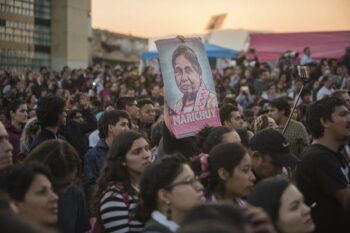
Imagen: Eneas de Troya. Marichuy en Ciudad Universitaria. (CC POR 2.0)
El CNI integra a 68 pueblos. No todos están porque aunque todos llegaron a la primera convocatoria, algunos se han desvinculado con el tiempo o solo asisten a asambleas ocasionalmente. Los zapatistas son parte de este espacio y gracias a ellos el CNI no ha perdido el rumbo hasta el momento. Nació para hacernos más fuertes, para defendernos y buscar desde dentro nuestras propias formas de organización. Fortalecer nuestra autonomía en el tiempo.
Una lucha presente
¿Qué pasó con los Acuerdos de San Andrés, tanto en 1996 como en 2000?¿Cuál es el estado de la legislación en materia de derechos humanos de las comunidades indígenas de México?
(MA): Luego de la aprobación de la contrarreforma indígena de 2001, la llamada Ley Cocopa, que cercenó derechos y no recogió el espíritu de los Acuerdos de San Andrés, quedó claro que todo iba a tomar el mismo rumbo. Era la intención de seguir reglamentando las normas que están vigentes, pero bajo aquella primera que nació para lesionar a las comunidades.
Desde los pueblos vemos que esta ley fue la forma en que el poder y el capital aseguraron el despojo de las comunidades. Fue una preparación para poner en marcha los megaproyectos. Por lo tanto, no todas las leyes protegen realmente a las comunidades. Hay otras leyes, por ejemplo, el Convenio 169 de la Organización Internacional del Trabajo (OIT), número seis, que establece que todo lo que tenga que ver con las comunidades indígenas debe ser consultado. Pero lo que está pasando ahora es que se están haciendo consultas simuladas para que los proyectos salgan adelante. El gobierno está utilizando estas herramientas “legales” para justificar aún más el desalojo de comunidades.
¿Entonces actualmente no hay un diálogo real entre el gobierno actual y las comunidades indígenas?¿El gobierno de López Obrador no representa un cambio con respecto a los gobiernos anteriores?
Nisaguie Flores (NF): No. No ha cambiado. Por el contrario, el botín se ha agudizado. Porque con este “nuevo gobierno”, que se llama de izquierda o “de los pueblos”, se han adelantado muchos megaproyectos que se pararon en los últimos seis años, lo que no quiere decir que en esos otros periodos estuviéramos bien. Creo que este cambio de gobierno ha sido estratégico. En México había demasiada insatisfacción y descontento y “¿cómo parar eso?” Porque se le puso a alguien que se suponía iba a beneficiar al pueblo. Pero no. En ningún momento este Gobierno tomó en serio a las comunidades indígenas. No respeta nuestras formas de organización. López Obrador no representó un cambio, le dio continuidad a los megaproyectos. Ya desde su campaña electoral dijo que no los detendrían. No importa qué partido político esté en el gobierno. Al final, los mismos políticos se quedan en el poder, solo cambian de partido.
En 2016 se aprobó la creación del Concejo Indígena de Gobierno (CIG). ¿Cuál fue la propuesta para postularse en la campaña electoral presidencial de 2018?
(MA): Este es otro tema que surgió cuando el CNI celebraba su 20 aniversario. Cuando realizamos el quinto congreso se hizo un repaso para analizar nuestra trayectoria y la situación de nuestras comunidades. La conclusión fue que las circunstancias eran más complicadas. A 20 años de caminar juntos hubo más despojos, más encarcelamientos, y ahora se sumaba la amenaza del crimen organizado, que estaba presente justo en los lugares donde se ejecutaban los megaproyectos. Llegaron, asustaron a la población e impidieron que los miembros de las comunidades se organizaran. Por eso dijimos: no podemos hacer otra declaración, como hicimos en las otras reuniones. Recuerdo a nuestros hermanos zapatistas diciendo: tiene que haber algo más fuerte, algo que sacuda al país y visibilice que el pueblo está sufriendo, que está siendo masacrado.
Buscamos organizarnos y tejer redes para actuar contra los despojos que vivimos en todo el mundo
Fue entonces cuando nuestros hermanos zapatistas propusieron presentarse a las elecciones presidenciales 2017-2018. Creemos que fue muy preciso. Teníamos claro que el objetivo era visibilizar los problemas de nuestras comunidades y poder recorrer el país para invitar a la gente a construir otra forma de gobernar. Entonces dijimos, juguemos con las mismas herramientas, solo que vamos a tomar otros objetivos. Por eso participamos con una CIG, que iba a estar formada por concejales que iban a hacer una propuesta de gobierno. Al final, participar en este proceso electoral nos dio la oportunidad de viajar por el país y escuchar los problemas. Por lo tanto, aunque no logramos obtener las firmas necesarias para estar en una boleta electoral, el CIG terminó más fuerte. El hecho de salir a decir que tenemos que buscar otra forma de organización y no acatar lo que nos han impuesto. En ese proceso también nos dimos cuenta hasta qué punto los medios de comunicación están de acuerdo con todo lo que se ordena desde arriba, porque eran ellos los que en vez de apoyar y preguntar por los problemas de las comunidades indígenas preguntaban tonterías que desviaban la atención.
¿Cuál fue el resultado de la campaña electoral?, ¿ha cambiado su perspectiva sobre el país y el estado de las comunidades indígenas?
(MA): Recuerdo que al principio éramos 70 regidores y al final éramos 157 hombres y mujeres que logramos formar el Consejo. Pero lo que “tomamos” de ese recorrido fue ver que los problemas que se discutían en las asambleas del CNI, se estaban dando en los pueblos. Y que no eran sólo problemáticas de los pueblos originarios. También caminamos en barrios, municipios y ciudades. Hablamos con estudiantes, mujeres y otros grupos. Nos dimos cuenta de que dondequiera que teníamos la oportunidad de escuchar a la gente, los problemas eran similares.
Todo esto nos hizo hacer un “mapeo” de cómo es México. Hemos visto y coincidido que la carencia que vivimos en nuestros pueblos y comunidades, también se lleva a cabo en barrios, municipios, escuelas… escuchamos a algunos estudiantes de varias universidades y los problemas que comunicaron tenían que ver con el avance del capitalismo. que prepara una privación individual y colectiva. Nos quedó claro que había una necesidad de tejer las luchas del campo y de la ciudad, de la juventud, de las mujeres, de todas aquellas personas que de alguna manera resisten esta privación del capitalismo. Porque no solo manifestaron sus problemas, sino que relataron su proceso de resistencia. Eso nos pareció muy importante porque no importa si eran movimientos grandes o pequeños, son luchas que se están dando contra las condiciones impuestas, esto nos hizo iguales.
Los problemas de los pueblos ya no son sólo de los pueblos originarios, son más generales. Con esto nos quedó claro que la lucha no es solo nuestra. Si nos están afectando a todos por igual, necesitamos encontrar otras formas de relacionarnos, de tejer y de movernos juntas y juntas para construir algo fuerte de abajo hacia arriba. Estoy hablando de algo que no cabe en la urna. Tienes que hacer un esfuerzo adicional.
Lo importante es verlo directamente y poder articular estas luchas que coinciden y que se reflejan unas en otras. Quizás en América Latina son luchas más complicadas porque enfrentan otros grados de violencia y agresión, pero de una u otra forma estamos en la misma lucha contra un enemigo común, que es este sistema capitalista y patriarcal, cuyo único interés es expropiar. propiedad .natural no importa quien este alli. Le importa más el dinero que la vida misma. El propósito es este: estar aquí, conocernos, articularnos y aprender. Aprendemos de ambos lados. Y, lo que nos sirva, lo ocuparemos en nuestras respectivas luchas.
¿Qué esperan de Europa hoy?, ¿cuál es el propósito de esta gira?
(N): El propósito está en el mismo nombre: Gira por la vida. Porque creemos que la única forma de luchar es defendiendo la vida y la única forma de hacerlo es organizándonos. Buscamos organizarnos y tejer redes para actuar contra el despojo que vivimos, porque no solo lo vivimos en México, sino que lo vivimos en todo el mundo y eso es lo que estamos viendo ahora en los diferentes países que hemos ido. Conocemos su propio despojo: aquí en Galicia, por ejemplo, están luchando contra las empresas mineras; en Austria, contra la construcción de una carretera y contra los parques eólicos. En Europa también hay movimientos de resistencia y es importante que los conozcamos. No es lo mismo escuchar todo esto desde México.
Llámense como se llame un megaproyecto, lo que hay detrás es el capitalismo voraz que nos quiere acabar y a quienes lo evitamos como pueblos indígenas.
Lo importante es verlo directamente y poder articular estas luchas que coinciden y que se reflejan unas en otras. Quizás en América Latina son luchas más complicadas porque enfrentan otros grados de violencia y agresión, pero de una u otra forma estamos en la misma lucha contra un enemigo común, que es este sistema capitalista y patriarcal, cuyo único interés es expropiar los bienes naturales sin importar quien esté alli. Le importa más el dinero que la vida misma. El propósito es este: estar aquí, conocernos, articularnos y aprender. Aprendemos de ambos lados. Y, lo que nos sirva, lo ocuparemos en nuestras respectivas luchas.
¿Qué opinas de la acogida e interés europeo por sus proyectos?
(MA): Vemos mucho entusiasmo. A pesar de no conocernos, son muy amables al darnos algo para comer y un lugar para dormir. Para nosotros esto ya es mucho porque venimos a invadir (risas). Sobre todo, nos están mostrando cómo el capitalismo está dañando a este continente. Antes de viajar, pensábamos que en los “países donde hay más progreso” no sufrimos lo que sufrimos en México. Pero, aquí estamos, dándonos cuenta de que era un concepto erróneo. Hay organizaciones de jóvenes, mujeres, agricultores que están desarrollando proyectos para recuperar la tierra. Y nos parece importante que nos compartan sus formas de organización porque tal vez podamos llevarlos a México para reforzar lo que allí se construye. Ya estamos encantados de compartir estas experiencias.
Ante la violencia, las desapariciones y otras prácticas represivas, ¿cómo continuar la defensa de la vida?
(N): La única forma es organizándonos. Lo que venimos a compartir en este recorrido son nuestras formas de organizarnos. Y vemos que el único camino es este: la organización desde abajo, desde las comunidades, desde la toma de decisiones de todos los pueblos y de los que luchamos por la vida. Creo que esa es la única forma en que podemos hacer frente a toda la violencia que estamos viendo como comunidades indígenas. Durante mucho tiempo nos hemos organizado a través de asambleas en las que todos tienen la oportunidad y el derecho a hablar. No podemos hacerlo solos. Y por eso necesitamos crear redes de apoyo para fortalecernos aunque estemos en geografías separadas.
Megaproyectos contra las comunidades
Nisaguie, estás trabajando para visibilizar las demandas de dos poblaciones del Istmo de Tehuantepec, que amenazas enfrenta actualmente esta zona de Oaxaca?
(N): La región del Istmo es una región que desde hace mucho tiempo ha sido identificada por el Gobierno como un punto estratégico, porque está en la parte más angosta de México, que conecta con dos océanos, el Atlántico y el Pacífico. Por lo tanto, ha sido durante mucho tiempo un área en disputa. Actualmente existe un proyecto llamado Corredor Interocéanico, que en realidad es parte de un paquete de proyectos que conectan con el Proyecto Integral Morelos y el mal llamado Tren Maya. Al mismo tiempo, implicará la construcción de maquinaria, gasoductos, minas y más proyectos energéticos. También quieren hacer un canal seco, como el de Panamá. Este último cambia de nombre cada seis años, pero el proyecto es el mismo. El objetivo de este canal seco es reducir el tiempo que se tarda en mover mercancías. Sería mucho más rápido que Panamá.
México cuenta con 32 parques eólicos distribuidos en varios estados. La mayoría están en Oaxaca, donde hay 29. En total hay 2,100 aerogeneradores distribuidos en aproximadamente 50,000 hectáreas. Estamos luchando contra muchas cosas. Pero todo esto no está pasando sólo en la región del Istmo, está pasando en todo México. Cada pueblo está luchando contra un negocio o un megaproyecto que está despojando a las comunidades. Hay comunidades que incluso fueron desplazadas y tuvieron que migrar a la Ciudad de México, donde luego enfrentaron otras luchas. Por ejemplo, los yaquis del norte del país luchan contra un vertedero clandestino.
Si las normas y procedimientos establecidos por el Estado están perjudicando a los que están debajo de nosotros, necesitamos construir otras que realmente garanticen la vida de todos.
Hay otros pueblos que luchan contra la imposición de los monocultivos de aguacate, un negocio que está totalmente controlado por el narcotráfico. Hay tantas luchas. De hecho, si miras en el mapa minero de México, verás que todo el territorio está concesionado a la minería. Es decir, nos quieren exterminar. Llámese como se llame la empresa o el megaproyecto, lo que hay detrás sigue siendo el capitalismo voraz que nos quiere aniquilar y a quien lo impedimos como pueblos indígenas. Por eso desaparecen y nos matan.
Sabemos que con todos estos megaproyectos viene el narcotráfico, la militarización, que a su vez aumenta el feminicidio, el tráfico de mujeres, de órganos… suena muy feo, pero, a pesar de todo esto, en cada comunidad nos estamos organizando para poder crear nuestros procesos de autonomía. No tenemos los años de lucha ni la capacidad de nuestros hermanos zapatistas, pero tratamos de hacerlo a nuestra manera desde nuestros propios contextos.
A nivel mediático poco se ha dicho sobre las implicaciones del narcotráfico en las comunidades indígenas. ¿Cómo ha afectado y sigue afectando la guerra y cómo gestionan esa lucha?
(MA): Es un paquete de herramientas de represión que está usando el gobierno, al que llamamos “narco-Estado”, porque da impunidad y permite que estos grupos criminales se muevan libremente, especialmente donde se están ejecutando los diferentes megaproyectos. El problema se agudizó en el sur con el Proyecto Integral Morelos. Los grupos del crimen organizado están llegando a todos los pueblos de México donde hay resistencia, donde se están organizando para frenar cualquier proyecto que atente contra la vida de las comunidades. Que con el fin de impedir la organización. Precisamente estos grupos están para fortalecer y asegurar la imposición de los megaproyectos. Ante esto, el pueblo no tiene más remedio que fortalecer su propia seguridad, porque ya no hay confianza en la policía, el ejército o la marina. Donde se supone que deben estar para cuidarnos, son los que están en contacto con los grupos criminales, donde matan y desaparecen a los activistas.
¿Ha aumentado la presencia policial y militar en las comunidades?
(MA): Andrés Manuel López Obrador había dicho que iba a sacar al ejército de las calles y no es así. Ahora las comunidades están tomando su seguridad en sus propias manos al crear su propio consejo de seguridad. Son policías asignados por la misma asamblea para cuidar a las personas y están a la espera de que los guardias caminen correctamente y no sean reclutados por grupos del crimen organizado. Entonces esto demuestra que la única opción es organizarnos. Aunque el Gobierno diga que estas medidas son ilegales, lo único que estamos haciendo es retomar los mecanismos de seguridad que originalmente tenían las comunidades y que finalmente se perdieron porque se introdujeron mecanismos ajenos, que son precisamente los que están perjudicando a la gente.
Se trata de ver cómo tejemos esas redes de quiénes somos y de dónde venimos
Por eso decimos que hay que buscar otros caminos, se trata de inventar. Si las normas y procedimientos establecidos por el Estado están perjudicando a los de abajo, debemos construir otras que realmente garanticen la vida de todos porque de lo contrario seguiremos acatando lo que nos imponen, que ya hemos visto que no favorece la vida.
Mencionaste antes los problemas con los medios en cuanto a la visibilidad de los procesos de resistencia. ¿Cómo lidias con este problema?
Las comunidades y los medios libres están utilizando sus propias herramientas para poder difundir los problemas que existen. En ese contexto, los aliados que nos vamos encontrando en el camino son importantes para difundir la situación de nuestras comunidades, porque los medios tradicionales no hablan de nada de lo que pasa en ellas. Esto también ha llevado a las comunidades a crear sus propias radios o sus propios medios para comunicar lo que está pasando. Actualmente, los medios oficialistas, cuando hablan de Michoacán, Chiapas, Guerrero, solo hablan de narcotráfico, desaparecidos, muertos… han sido etiquetados en las regiones. Entonces lo que buscan las comunidades es comunicar que son mucho más que eso. Mostrar que son comunidades que tienen una historia y una forma de vida.
Sus reivindicaciones tienen muchos frentes. La lucha en defensa de la tierra, la defensa de la autonomía y los derechos de los pueblos indígenas, la lucha decolonial, antipatriarcal y anticapitalista. ¿Cómo se articulan?
(MA): Lo que vemos es que tenemos un gran enemigo en común, que es el capitalismo, que tiene diferentes formas de despojarnos. Yo creo que las luchas que se están dando en distintas geografías de México y el mundo van encaminadas a lo mismo: a derrocar paulatinamente el sistema capitalista. Eso nos da más energía para buscar aliados. No es una sola lucha. No es solo la lucha de los pueblos, hay luchas de mujeres, hay hermanas y hermanos que han emigrado y que están luchando donde están; luchas de los campesinos y obreros de la ciudad. Se trata de ver cómo tejemos esas redes de quiénes somos y de dónde venimos. Y hacerlo desde abajo.
Hay varias luchas y la nuestra no es más importante. Todos son importantes y necesarias. Sean grandes o pequeñas, entre todas estas resistencias, es que algo podemos hacer y luchar contra el sistema capitalista que nos está acabando por separado. De ahí la importancia de tejernos y fortalecernos. De lo contrario, les estamos dejando el camino fácil para que ellos sigan decidiendo sobre nosotros y sigan despojando y asesinando. En las comunidades decimos que el calentamiento global es un llamado de la Madre Tierra que nos dice: haz algo, no me dejes solo. Por eso, como pueblos, decimos que la lucha es por la vida. Y una vida que no sea solo nuestra, sino de todos.

